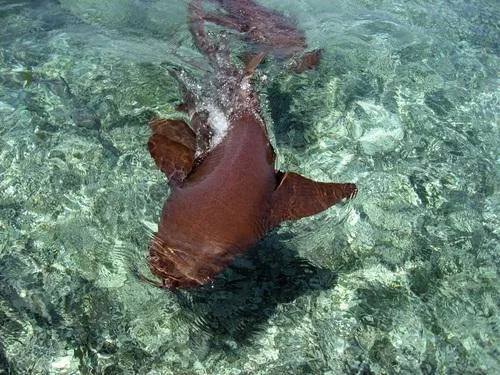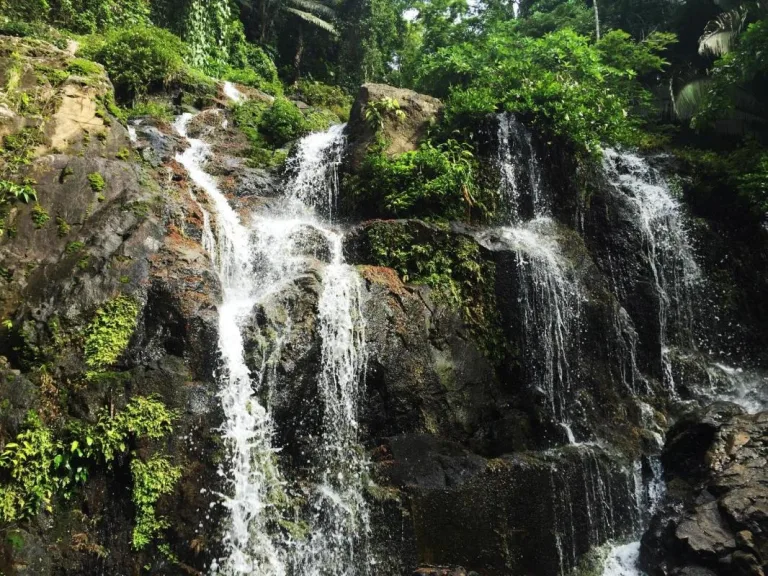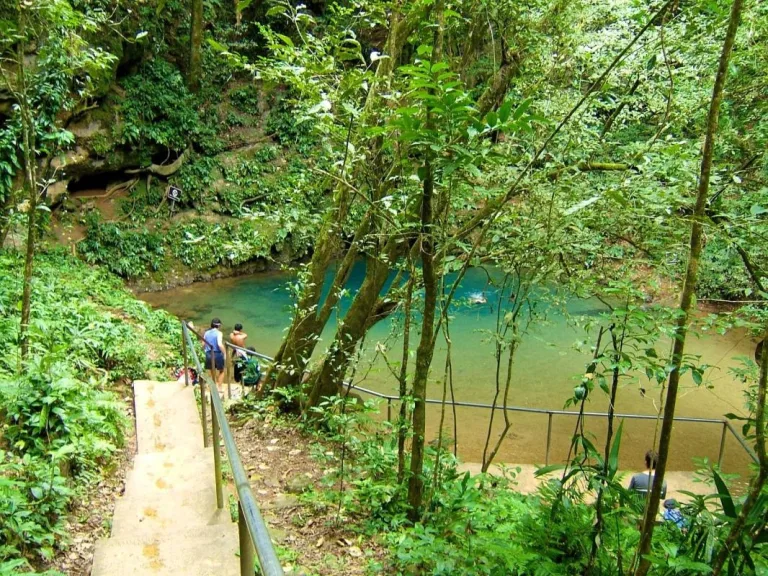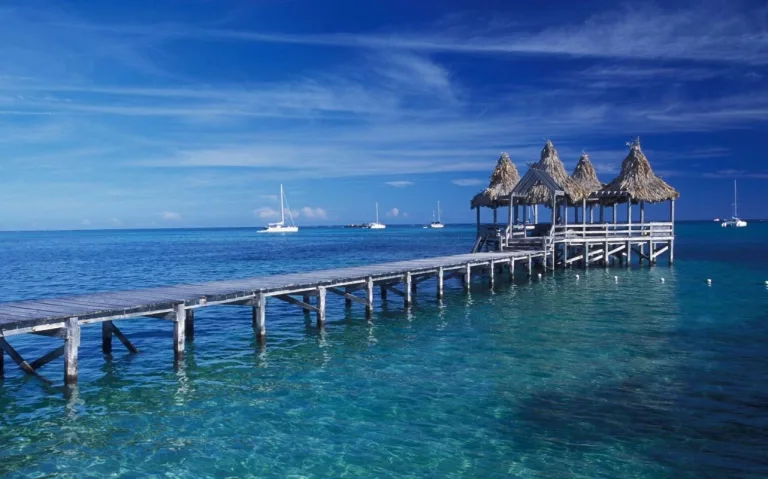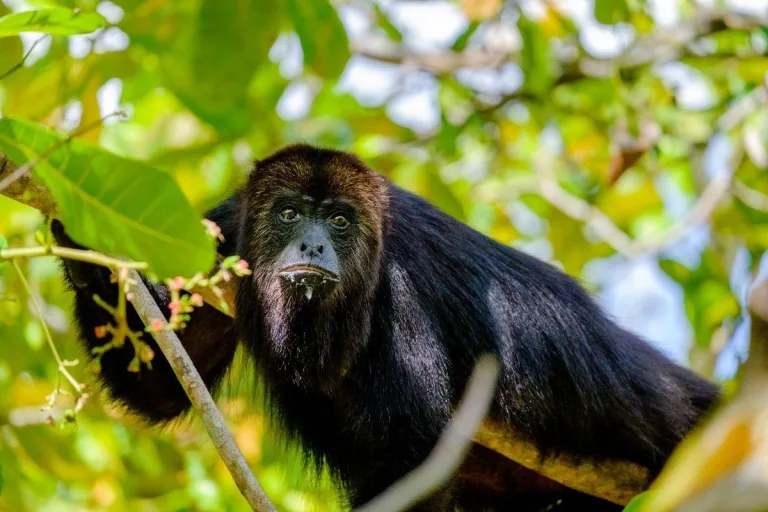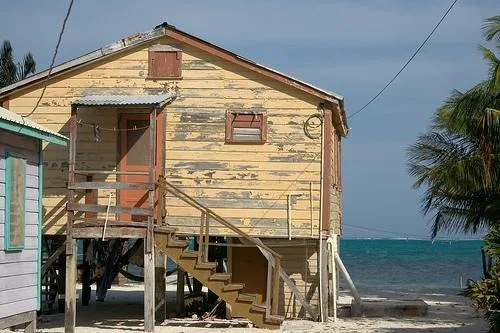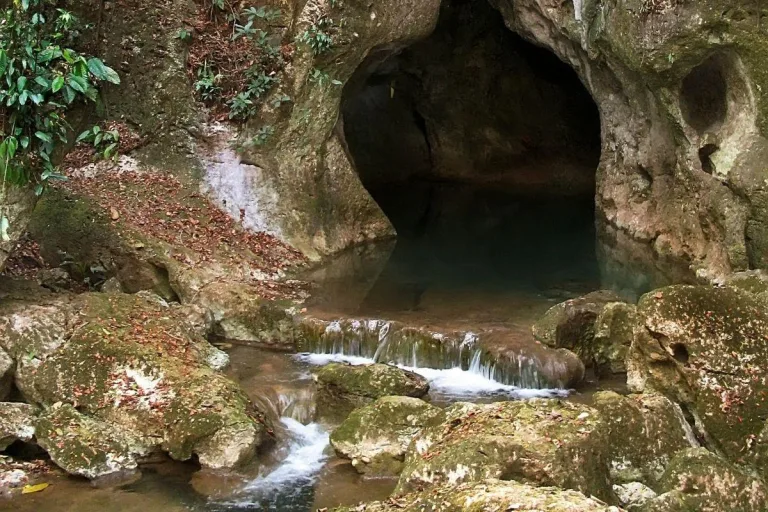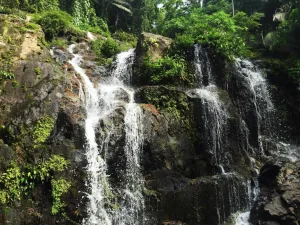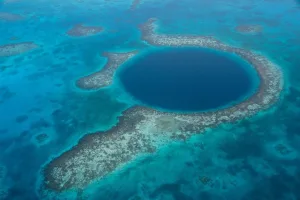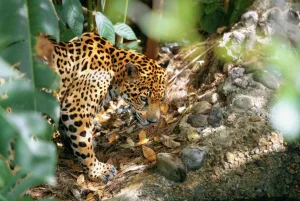Around 4 miles (6.4 kilometers) south of the shores of Ambergris Caye, Hol Chan Marine Reserve is the most-visited snorkeling and diving area in Belize. Part of the Belize Barrier Reef, the reserve covers about 3 square miles (7.7 square kilometers) and is divided into zones according to marine habitat.
Hol Chan (or “small channel” in Mayan) is the most popular zone—a 30-foot-deep (9-meter-deep) “cut” in the reef where all sorts of marine life gather, making it like a giant aquarium. You might see coral, angelfish, turtles, hogfish, snapper, and many others. Another top zone is Shark Ray Alley, a shallower area replete with nurse sharks and stingrays. Grass beds and mangrove make up the other zones, and while less-visited, these areas provide unique viewing opportunities—you could even spot some manatees.
Guided sailing and snorkeling tours of Hol Chan Marine Reserve typically include round-trip transportation from hotels in San Pedro, Caye Caulker, and Belize City.
-
The Hol Chan Marine Reserve is constantly patrolled, and visitors must observe rules such as no touching or standing on coral.
-
Swimming with a guide helps you spot and identify sealife.
-
Hol Chan often experiences strong currents, so be cautious.
-
A large moray eel population inhabits Hol Chan. Don’t touch them—they bite.
-
The reserve is considered a good site for first-time divers.
-
The reserve has an informative visitors center in town with clear displays of Belize’s various marine habitats.
The Hol Chan Marine Reserve is located southeast of San Pedro, near the island of Ambergris Caye. Because the reserve is managed by the Belize Fisheries Department, you can access it only through a licensed tour operator.
Belize’s peak tourist season is late November to mid-April. The Hol Chan Marine Reserve can be crowded at times—you may even bump into other snorkelers. Tour operators generally run trips twice a day, in the morning and afternoon.
Shark Ray Alley is home to stingrays as well as nurse sharks, which, for the most part, are harmless to humans. They are slow-moving and docile, but will bite if stepped on or bothered, so refrain from touching them. Tour guides are allowed to feed the sharks from the boat.

